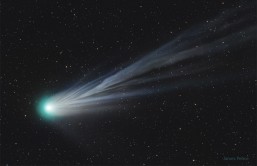According to a new study conducted by Megan Cimino, 60 percent of the current Adélie penguin population won't be able to live on Antarctica by the end of the century.
Adélie penguins have been residing in Antarctica for approximately 45,000 years.
But according to University of Delaware, the penguins are having trouble adapting to the climate changes lately.
"Our study used massive amounts of data to run habitat suitability models. From other studies that used actual ground counts - people going and physically counting penguins - and from high-resolution satellite imagery, we have global estimates of Adélie penguin breeding locations, meaning where they are present and where they are absent, throughout the entire Southern Ocean," said lead author Megan Cimino, PhD.
"Based on this relationship, we project that one-third of current Adélie penguin colonies, representing ~20% of their current population, may be in decline by 2060. However, climate model projections suggest refugia may exist in continental Antarctica beyond 2099, buffering species-wide declines." Cimino added.
Population drop is already being detected in the western portion of Antarctica.
"It is only in recent decades that we know Adélie penguins population declines are associated with warming, which suggests many regions of Antarctica have warmed too much and that further warming is no longer positive for the species," said Cimino. "We also have estimates of population size and how their populations have changed over last few decades."
Adélie penguins might find move to the Ross and Amundsen Seas which have played as glacial refuges in the past.
"Studies like this are important because they focus our attention on areas where a species is most vulnerable to change," said Cimino. "The results can be used for management; they can have implications for other species that live in the area and for other ecosystem processes."








